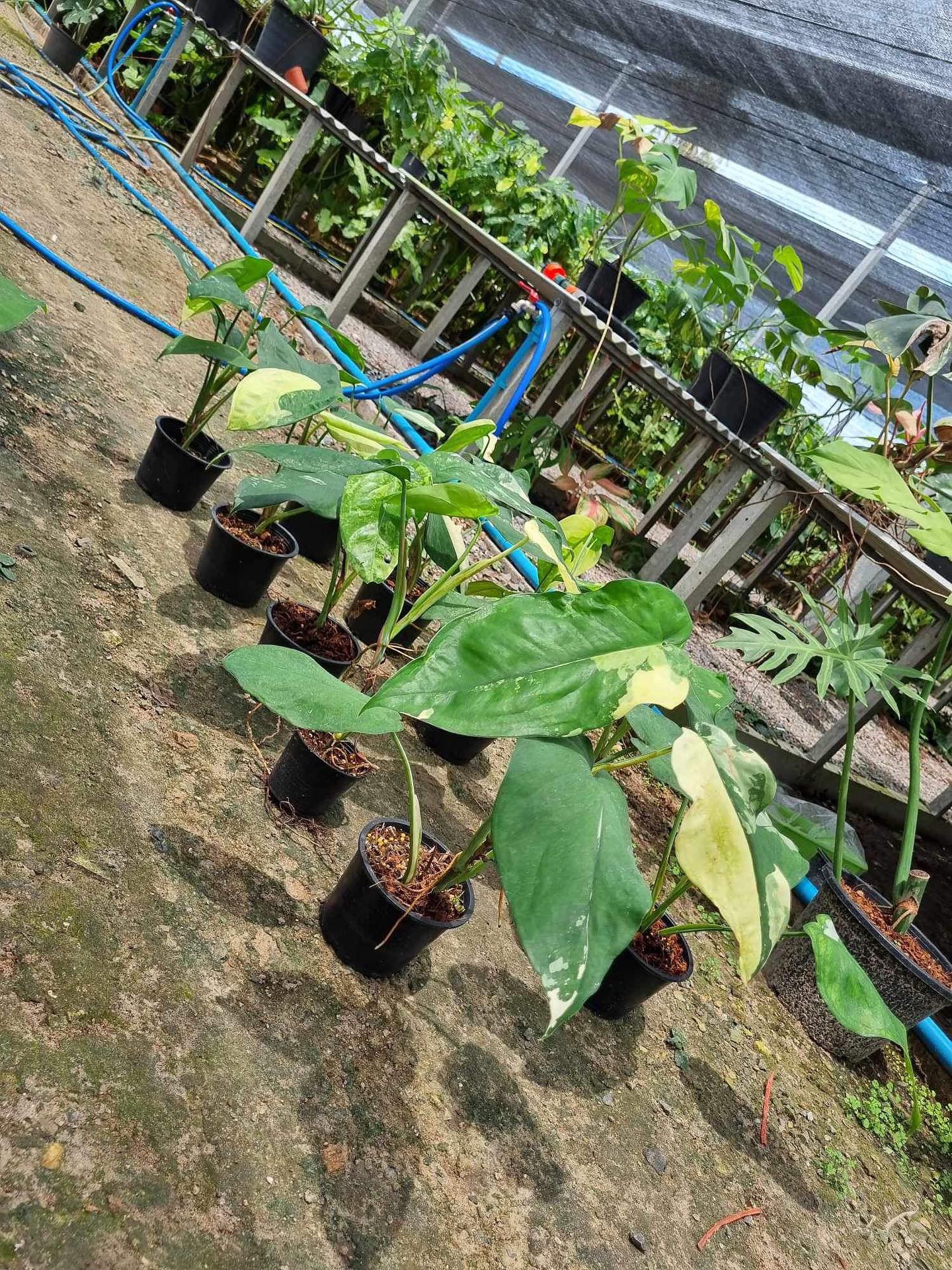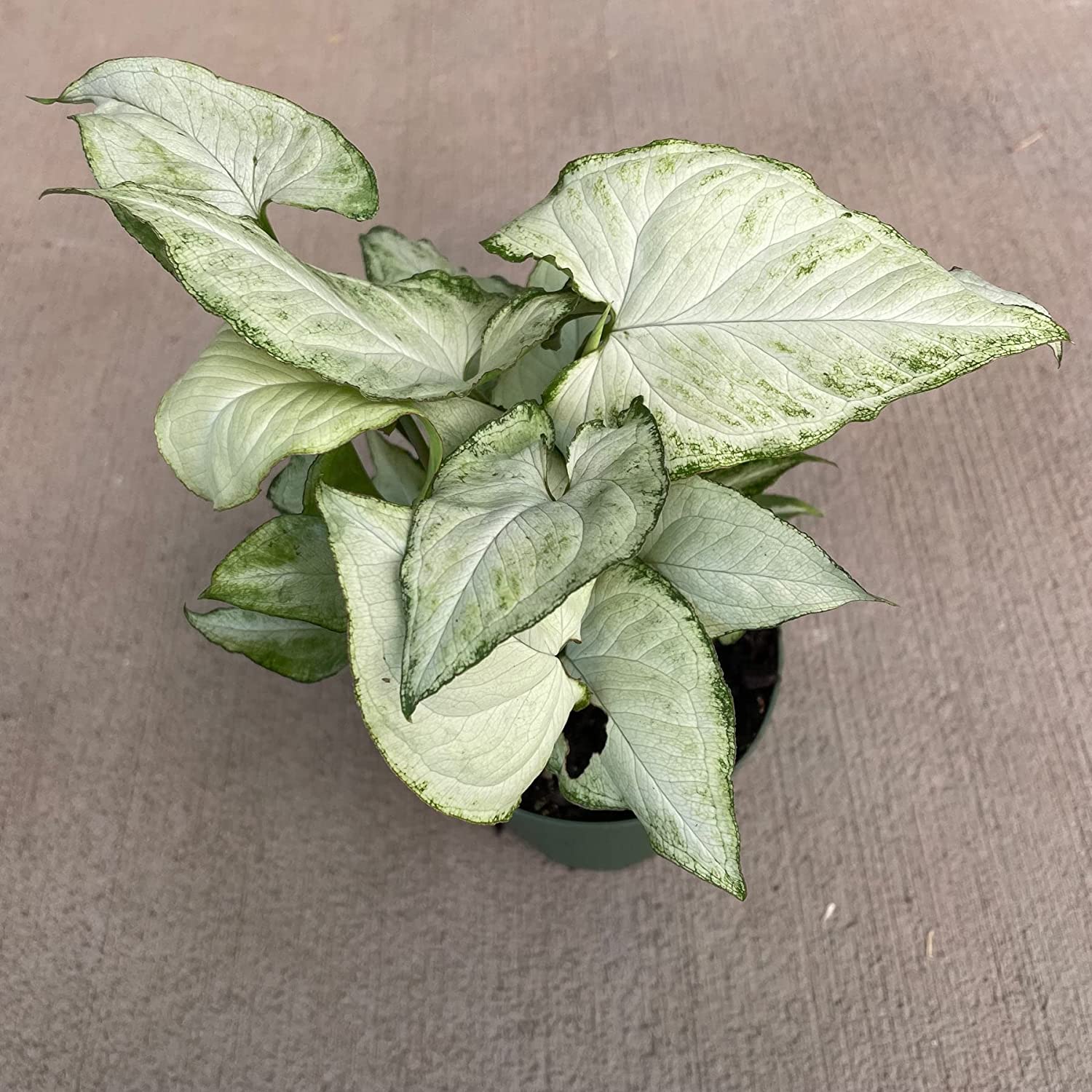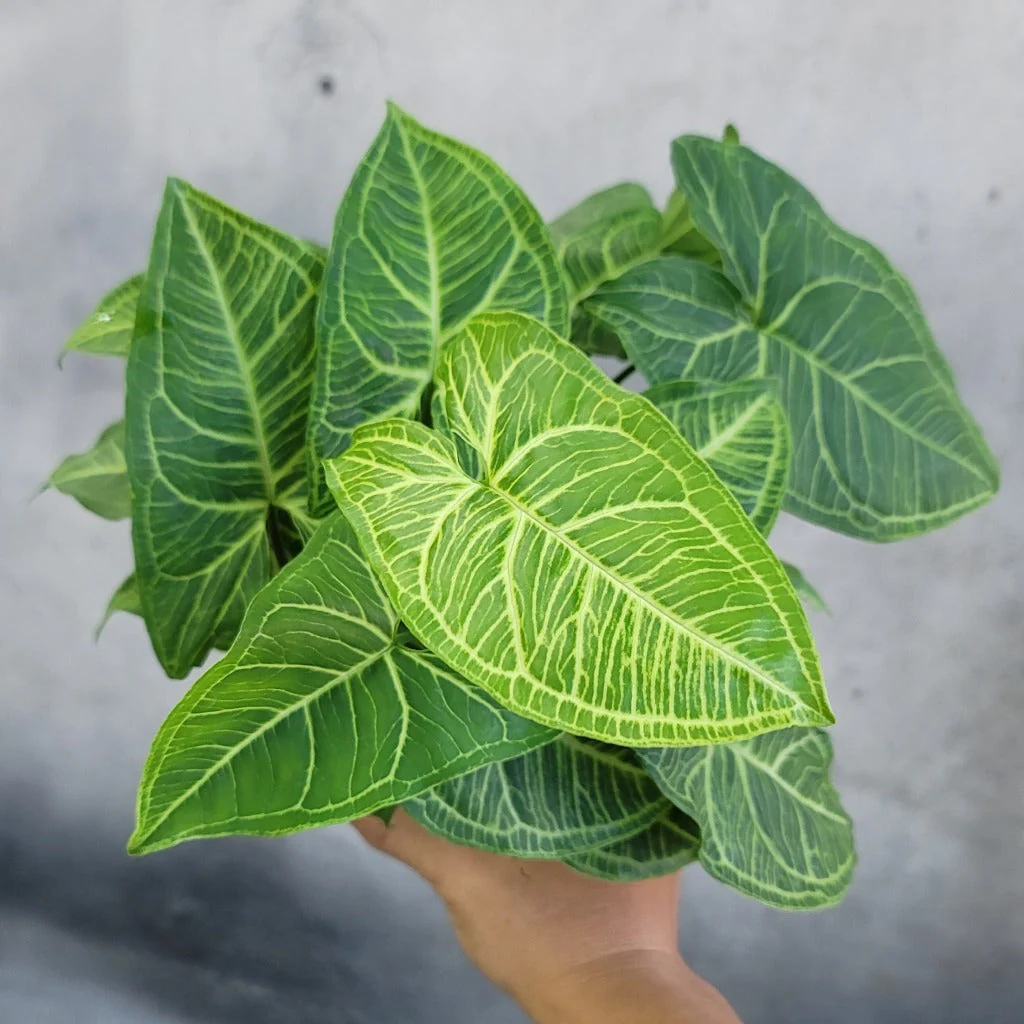Syngonium, also known as arrowhead plant, is an easy to grow houseplant known for its arrow shaped leaves. With proper syngonium care, these plants can grow quite large and make for an excellent addition to any indoor plant collection.
Light Requirements
Syngonium do best in bright, indirect light. While they can tolerate lower light conditions, their growth will slow and the leaves will likely become more spaced out.
Indirect Sunlight
An east, west, or lightly shaded south facing window provides the right amount and intensity of light. Be sure to filter the direct sun rays to prevent leaf burn.
Artificial Lighting
If natural light is insufficient, supplement with artificial full spectrum grow lights. LED grow lights work well and should be 12-18 inches above the plant for 12-16 hours daily.

Soil Needs
Use a well-draining potting mix for syngoniums. You can make your own mix by combining:
Peat Moss
Retains moisture but resists getting waterlogged. Helps aerate roots.
Perlite
Increases drainage and airflow in dense potting soil. Aerates the roots.
Compost
Provides nutrients for growth and supports beneficial soil microbes.
A quality potting mix ensures proper drainage and moisture retention in the root zone.
Watering and Humidity
As tropical rainforest plants, syngonium prefer consistent moisture and high humidity. However ensure the soil drains well to prevent soggy conditions.
Water Requirements
Water whenever the top inch or so of the soil is dry. Feel with your finger to check. Give them a thorough soaking whenever needed.
Humidity Levels
Maintain 50% humidity or higher. Run a humidifier nearby or place pots on a pebble tray with water. Misting the leaves also helps boost humidity temporarily.
Higher humidity keeps leaf tips from turning brown and crispy around the edges.

Temperature Considerations
Syngonium grow well in temperatures between 60°F to 80°F. Cooler temperatures below 50°F can damage plants or cause leaf drop.
Warm Conditions
Daytime temperatures around 75°F to 80°F are ideal. Leave plants in a bright location indoors.
Cool Conditions
At night, temps down to 60°F are fine. Can be moved away from drafty windows if needed.
Fertilizer Application
Feed monthly in the growing season with a balanced liquid fertilizer diluted by half. This provides nutrients without accumulating excess salts.
Growing Season
Fertilize every 4 weeks from early spring through summer. Stop feeding by fall.
Dormant Period
Discontinue fertilizer over winter when light and growth decrease. Resume feeding when new growth appears in spring.
Avoid overfeeding as it can cause leaf tip burn, root damage, and stunted plants.
Propagation and Growth
There are a few techniques for propagating new syngonium plants. Taking cuttings or air layering vines encourages bushier, fuller growth over time.
Stem Cuttings
Take 4-6 inch tip cuttings. Remove lower leaves. Place in water or moist propagating mix. New roots form within weeks. Transplant once established.
Air Layering Vines
On climbing vines, wound a section then wrap with sphagnum moss. Keep moist until roots form inside the moss then detach to pot up.
Pruning keeps plants tidy while taking cuttings ensures a steady supply of fresh new syngoniums.
“Explore the Exceptional 2023 Syngonium Collection: A Curated Selection of the Rarest and Most Unique Varieties Available.”

Common Concerns
Syngoniums tend to be quite hardy when cared for properly. But occasionally issues can still arise if conditions are less than ideal.
Drooping Leaves
Leaves that droop or wilt generally indicate underwatering. Feel soil to check moisture and water thoroughly.
Leaf Tipping Burn
Dry, brown crispy edges along leaves usually happen with insufficient humidity. Increase humidity levels around the plant.
Root Rot
Overwatering for too long can lead to root rot. Allow soil to dry between waterings and ensure pot drainage to prevent this.
Conclusion
With bright filtered sunshine, plenty of moisture, excellent drainage and airflow syngonium thrive with minimal care. They make excellent easy to grow houseplants. Follow these syngonium care tips to keep them healthy and growing beautifully.
See more how to care syngonium

